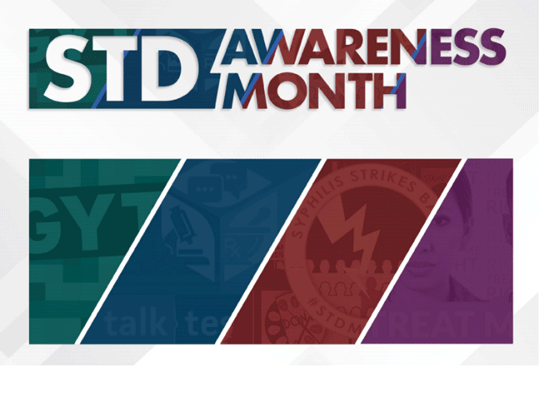How to Observe STD Awareness Month
Topics

Cross-posted from Centers for Disease Control and Prevention [PDF, 253KB]
Dear Colleagues,
Each April, we observe STD Awareness Month as an opportunity to raise awareness about what STDs are; how they impact our lives; and why prevention, testing, and treatment are so important. But, STD Awareness Month is about more than awareness: it’s also about action.
CDC is committed to ensuring you have the tools needed to take action where you live. As previously announced, we are taking a slightly different approach this year. Instead of developing a single-themed campaign, four of our most popular campaigns have been updated for your use. All four are now available on the STD Awareness Month website.
- Get Yourself Tested (GYT) encourages young people to get tested and treated for STDs and HIV.
- Talk. Test. Treat. focuses on three simple actions healthcare providers and patients can take to protect themselves/their patients.
- Syphilis Strikes Back highlights the resurgence of syphilis and the increased threat against gay and bisexual men, pregnant women, and newborn babies.
- Treat Me Right underscores the need for strong patient-provider relationships to overcome the rising STD burden.
STD prevention needs are as diverse as the people within our communities. We face a growing STD burden nationally; however, communities across the nation face their own unique STD burden. Therefore, each campaign includes materials and products that can be tailored to fit the needs of the people you serve. Download the STD Awareness Month toolkit [PDF, 1.6MB] to assist with planning.
This year’s STD Awareness Month brings with it increased urgency. STDs continue to surge – endangering the health of too many across the country. In 2017, more than 2 million cases of chlamydia, gonorrhea, and syphilis were diagnosed – and even newborn syphilis cases have more than doubled [PDF, 277KB] in recent years.
These data mean our work is more important than ever – and we can all get involved. CDC and other federal organizations, community leaders, health departments, community-based organizations, health care providers, and individuals can all take action at work, in our schools and communities, and at home to make a difference.
While those actions might differ from group-to-group, everyone should stand up to STD-related stigma, fear, and discrimination. These barriers keep people from taking the steps needed to protect themselves, their loved ones, their patients, and their communities. They hold too much power over our health, but with our collective voices, we can raise awareness, normalize STD prevention – and begin to take that power back.
Thank you for your unwavering commitment to STD prevention.
/Gail Bolan/
Gail Bolan, MD
Director
Division of STD Prevention
National Center for HIV/AIDS, Viral Hepatitis, STD, and TB Prevention
Centers for Disease Control and Prevention
www.cdc.gov/std
/Jonathan Mermin/
Jonathan H. Mermin, MD, MPH
RADM and Assistant Surgeon General, USPHS Director
National Center for HIV/AIDS, Viral Hepatitis, STD, and TB Prevention
Centers for Disease Control and Prevention
www.cdc.gov/nchhstp
Stay in touch about STD Prevention by following @CDCSTD on TwitterExit Disclaimer and by liking CDC STD on FacebookExit Disclaimer.